As families gather for home-cooked food this Thanksgiving, there's one acclaimed Los Angeles chef who expresses her gratitude for local flavors by getting out in nature.
On a recent day, we find chef Niki Nakayama and her wife, Carole Iida-Nakayama, in the mountains of the Angeles National Forest. They trudge through the dry vegetation with master forager Pascal Baudar, gathering unexpected ingredients to use at their restaurant, N/Naka.
At one point, they come across a black mustard plant, growing wild.
"It has a little bit of a flavor like gasoline," Baudar offers.
"When you exhale after chewing it, it's almost like the fumes come out of your nostrils," laughs Iida-Nakayama.
"That's the flavor of Los Angeles right there," Baudar says.
Nakayama sometimes uses this plant in her kitchen. And she makes sauces and garnishes out of California sagebrush, mugwort and pine needles. Baudar supplies her by scouring the Los Angeles wilderness.
"You have to be insane to do what I do," he says. "Insanely passionate."
We stop at a eucalyptus tree and Baudar pulls down a branch. Leaf by leaf, he scrapes off little white specks, which he collects into a glass jar.
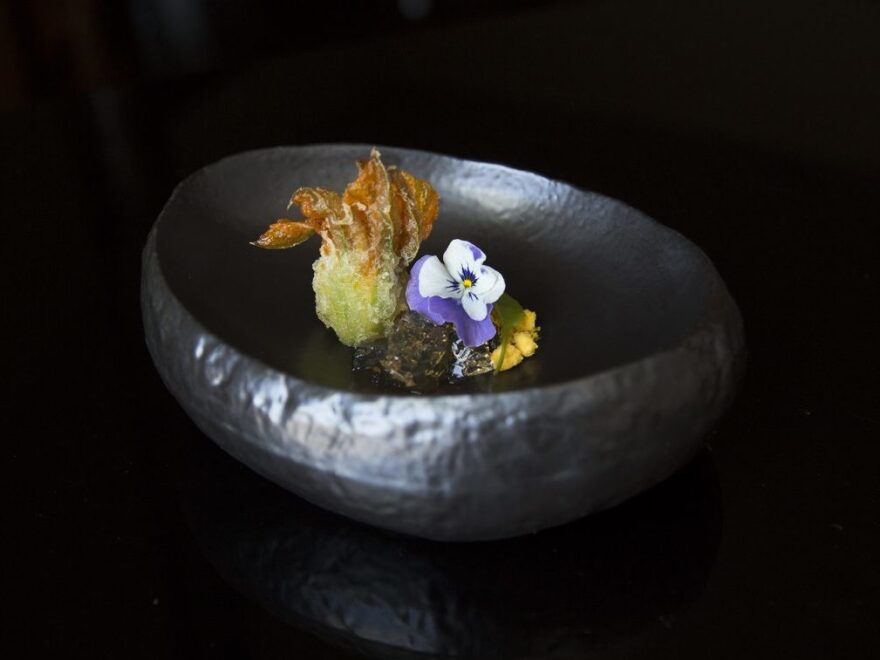
"This is our famous lerp sugar," he says. "Basically, there's a little insect that sucks the sap of the eucalyptus and poops sugar."
It takes hours to fill up a small jar with lerp sugar ... enough for an entire season in Nakayama's kitchen.
"We don't tell the guests until after they've had it what they've had. And the look on their faces is always very exciting for me," says Nakayama. The crunchy sugar tastes like Rice Krispies. "I think it adds a really nice accent when we can sprinkle a little bit on ice cream."
For the restaurant, Baudar has collected rocks that heat up soup bowls and pieces of bark, which he's varnished to use as plates. Nakayama and her wife — who's her sous chef — have also whittled chopsticks out of mulefat branches.
Nakayama says all of this flora goes along with the philosophy behind the traditional Japanese meal known as kaiseki.
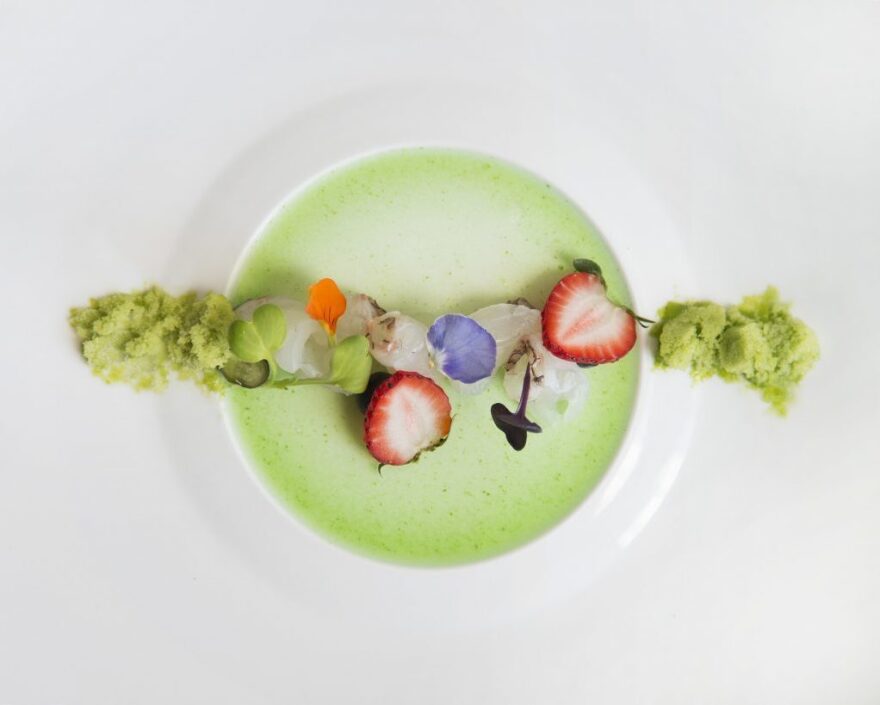
Kaiseki, she explains, is about "feeling grateful to nature and trying to represent where you're at seasonally, ingredient-wise. The more that we can find things that are closer by or from here, the ingredients are going to be better, everything's going to be fresher. It's more local, more seasonal. So I think that's the heart of kaiseki."
In the front yard of their Culver City home, Nakayama and her wife also grow vegetables, fruit and herbs for their restaurant. Here at home, the chef elaborates on the tradition of kaiseki — a meal presented during tea ceremonies or in elaborate, multicoursed feasts. Kaiseki, she says, is rooted in Buddhist and other Eastern traditions.
"The idea and philosophy behind it is the appreciation of nature, seasonality and focus into the moment that is in front of you, the moment at hand," she says. "And I think that comes from the zen background of it."
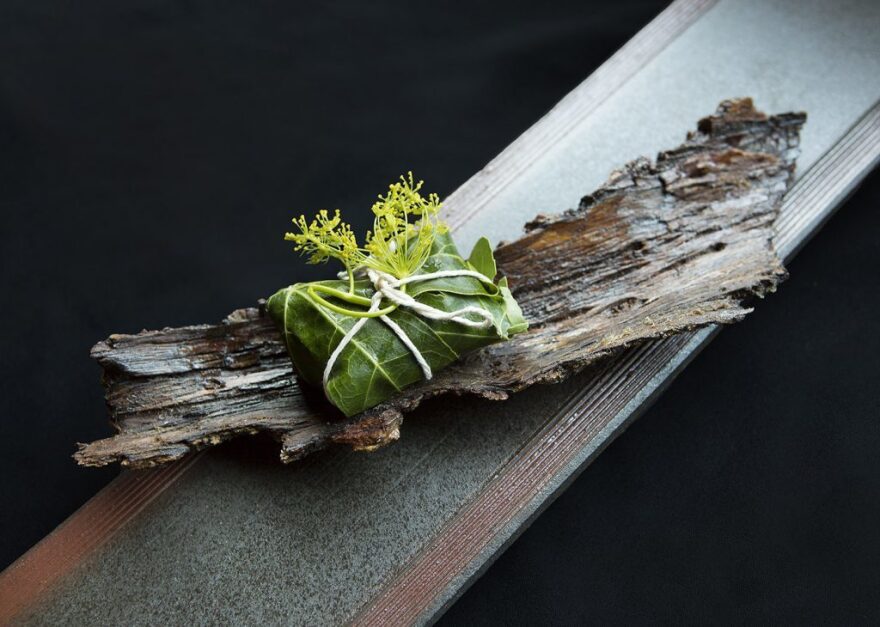
The 42-year-old chef was born in Los Angeles and grew up working at her parents' seafood distribution warehouse. She lived in Japan, where she learned various regional techniques, and went to culinary school in LA.
Today, Nakayama is known for serving up a reimagined, modernized version of the ancient kaiseki tradition. She's one of the few women in the world to be considered a master of this refined style of Japanese cooking. She was featured on the Netflix documentary show Chef's Table.
At N/Naka, her tastefully low-key restaurant in Culver City, Nakayama meets each diner personally.
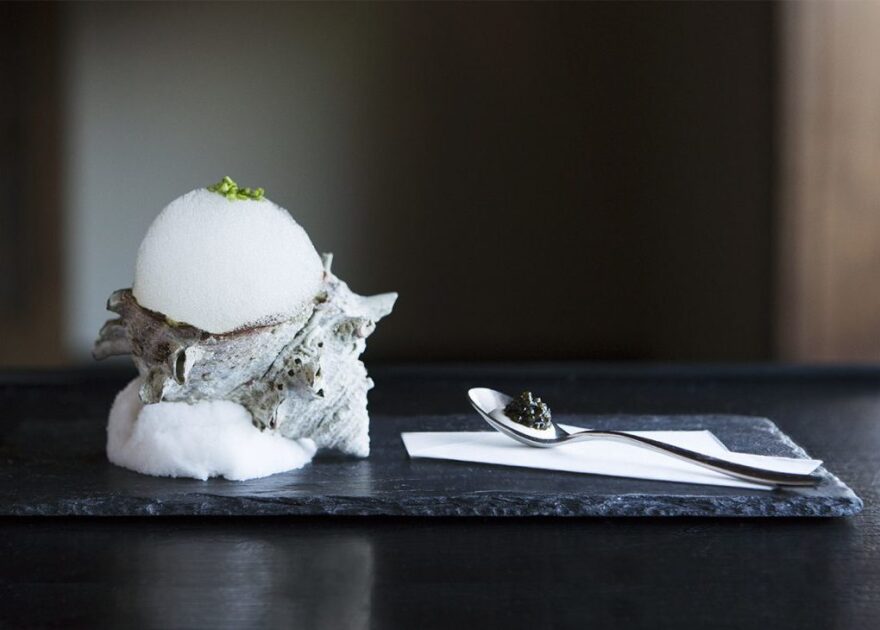
The waiting list to get in is three months long, and it's not inexpensive. For nearly $200 each, diners can enjoy a 13-course culinary experience. It's Kyoto by way of LA.
One dish features caviar on dashi foam that took eight months to prepare. Some artfully arranged dishes use a single delicate flower and microgreens from Nakayama's home garden.
"You can just see how much passion and artistic dedication that she puts into it. Just gorgeous," says Nicole Nguyen. Like other diners, she comes here to celebrate very special occasions.
"The food is always fantastic. It's like a work of art, every dish."
While we might not get to eat so extravagantly every day, chef Nakayama says we can still bring gratitude to every meal.
Kaiseki 101: The Japanese Art Of Eating In Tune With Nature
If you've ever thought about becoming a more mindful eater, take a lesson from the Japanese ritual of kaiseki.
Kaiseki is an ancient meal tradition that pays homage to the natural world and the changing seasons — so the ingredients are local and seasonal. One form of kaiseki is served as a simple meal before tea ceremonies. The other is a multicourse meal meant to be enjoyed in good company, which is why a fine sake rice wine is considered the standard accompaniment.
Just about every detail of the kaiseki meal promotes thoughtful, slow eating. Vegetables are cut into delicate shapes to reflect the seasons — like these carrots and pumpkin in the shape of leaves, signaling fall.
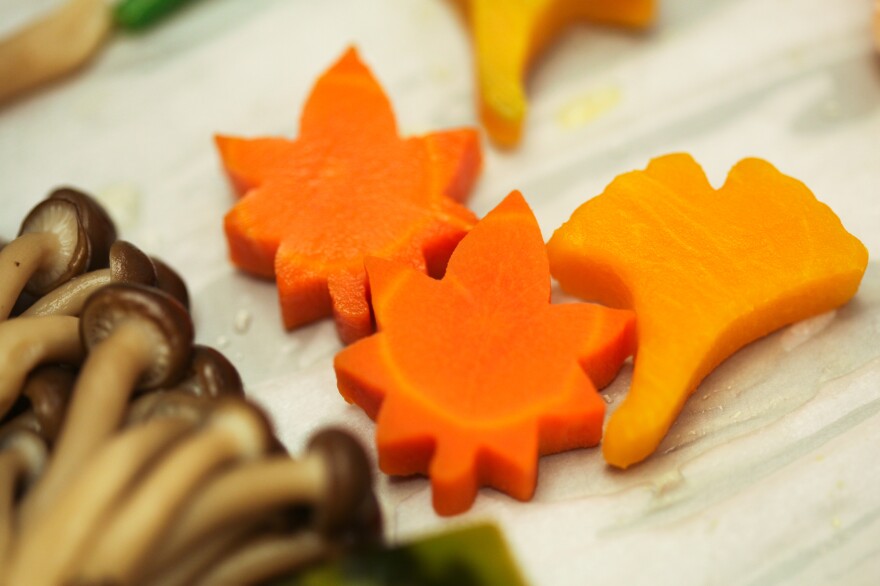
Ingredients are artfully arranged in shapes meant to subtly evoke some element of the natural world — for instance, piled into a small mound meant to evoke Japan's Mount Fuji.
Kaiseki is rooted in Eastern philosophies that emphasize a unity in nature, explains Julia Ford of the Embassy of Japan's Information and Culture Center.
From Buddhism, whose followers are vegetarian, comes an emphasis on vegetables. From Shintoism comes the idea that sacred spirits reside within the natural world, so the meal should strive for harmony with nature. And from Taoism comes the concept of "having yin and yang, of achieving balance" in the ingredients of the meal, Ford says.

That balance is found, in part, through the five cooking techniques — grilling, boiling, frying, steaming and raw — that are a feature of every kaiseki meal. "Each item is meant to counteract the other," Ford explains. Grilling, for example, represents fire, while boiling is meant to symbolize water.
Also featured are five colors — often achieved through the vegetables — and five tastes: sour, sweet, spicy, bitter, salt.
As Ryo Iizawa, executive chef at the Embassy of Japan in Washington, D.C., puts it, "The yum comes from the blend and balance of flavors."
— Maria Godoy
Copyright 2023 NPR. To see more, visit https://www.npr.org.





